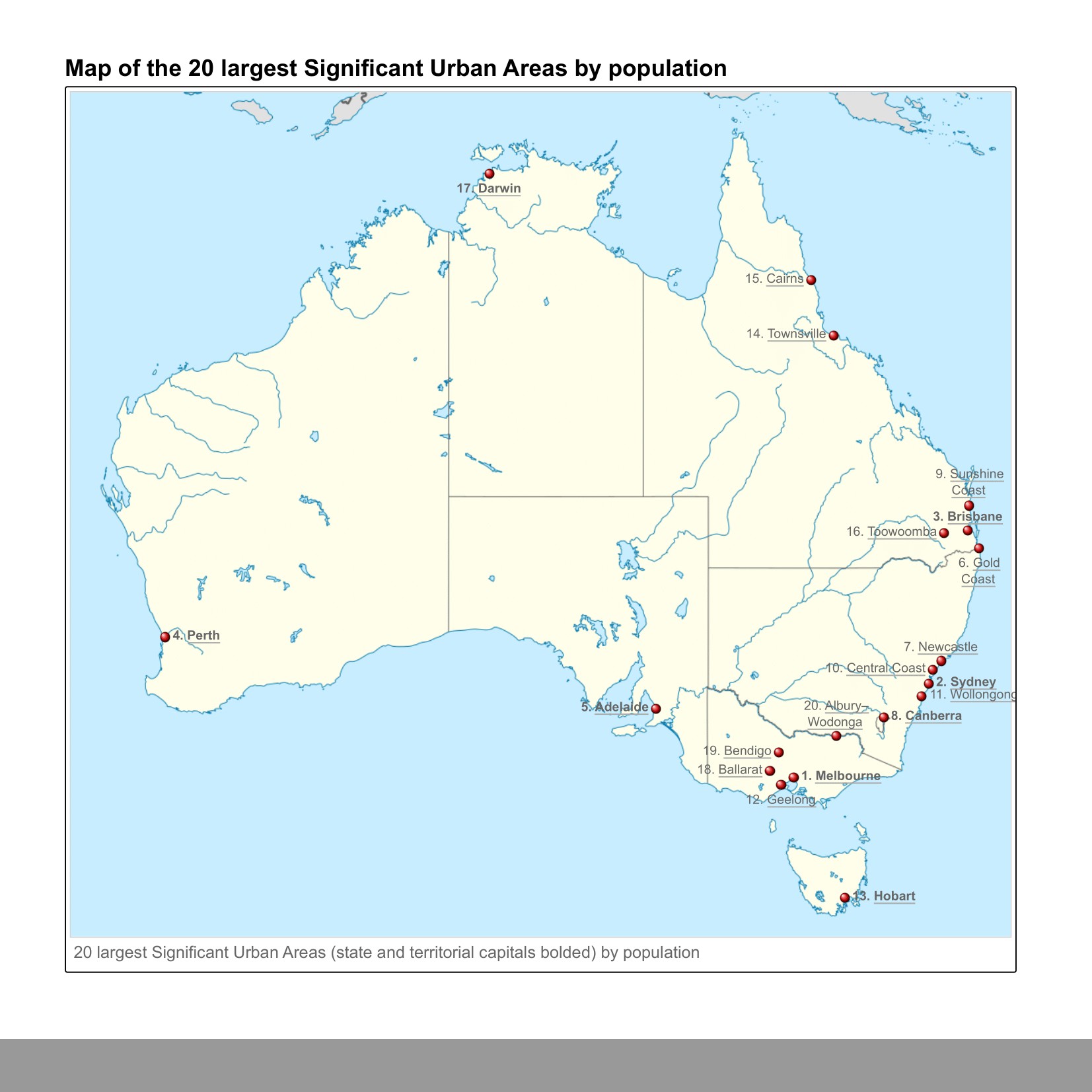Twenty Largest Urban Areas in Australia Map


Alex Cartwright
Senior Cartographer & GIS Specialist
Alex Cartwright is a renowned cartographer and geographic information systems specialist with over 15 years of experience in spatial analysis and data...
Geographic Analysis
What This Map Shows
This map presents a visual representation of the twenty largest urban areas in Australia, highlighting population concentrations and the geographic distribution of major cities. As urbanization continues to shape the Australian landscape, this visualization provides a clear understanding of where the majority of the population resides and how these urban centers are interconnected.
Deep Dive into Urbanization in Australia
Urban areas in Australia are not just centers of population; they are vibrant hubs of culture, economy, and innovation. As of the latest data, over 90% of Australians live in urban areas, with the majority clustered in major cities like Sydney, Melbourne, and Brisbane. This trend of urbanization has been steadily increasing over the decades, driven by factors such as migration, economic opportunities, and lifestyle preferences.
Interestingly, Sydney holds the title of the largest urban area in Australia, with a population of over 5 million people. The city is known for its iconic landmarks such as the Sydney Opera House and the Sydney Harbour Bridge, attracting millions of tourists each year. Following closely is Melbourne, with a population nearing 5 million as well, renowned for its cultural diversity, arts scene, and coffee culture.
These cities exemplify what urbanization looks like in Australia, but it’s essential to look beyond the mere numbers to understand the underlying dynamics. For instance, urban areas are characterized by higher population densities, which can lead to challenges such as congestion, housing affordability, and environmental sustainability. Moreover, the rapid growth of urban populations has significant implications for infrastructure and public services, making urban planning an increasingly vital field.
In contrast, cities like Perth and Adelaide, while smaller in population (around 2 million and 1.3 million respectively), demonstrate unique urban characteristics shaped by their geographic locations and local economies. Perth, located on the western coast, often faces issues related to its isolation from other major cities, which affects its economic interactions and accessibility. On the other hand, Adelaide is known for its festivals and food culture, which makes it a vibrant urban area, albeit with a slower growth rate compared to its eastern counterparts.
Regional Analysis
Diving deeper into the map, we can categorize urban areas into different regions. In the eastern states, Sydney and Melbourne dominate, contributing significantly to the overall population density of New South Wales and Victoria. Interestingly, the growth rates in these regions are influenced not only by internal migration but also by international immigration, with many newcomers settling in these metropolitan hubs seeking better job opportunities and quality of life.
Moving westward, we see Perth as the largest urban area in Western Australia, and its growth has been facilitated by the mining boom, attracting workers from across the country. However, this rapid growth has also led to challenges, including housing shortages and increased living costs.
In contrast, cities in the Northern Territory, such as Darwin, are much smaller, with populations under 150,000. These urban areas often experience slower growth rates due to their geographical remoteness and limited economic opportunities compared to larger cities.
Significance and Impact
Understanding the dynamics of urban areas in Australia is crucial for various reasons. Urbanization impacts not just the cities themselves but also the surrounding regions and the environment. The concentration of populations in urban centers can lead to significant economic benefits, such as increased productivity and innovation. However, it also poses challenges, such as environmental degradation and social inequalities.
As we look to the future, trends in urbanization suggest that Australian cities will continue to grow, with projections indicating that by 2050, approximately 70% of the population could be living in urban areas. This shift will require innovative urban planning and infrastructure development to ensure that cities remain livable and sustainable.
Moreover, the COVID-19 pandemic has also changed the way we view urban living, with remote work becoming more prevalent and prompting many to consider suburban living. It’s essential to keep monitoring these trends, as they will shape the future of urban Australia.
In conclusion, the map of the twenty largest urban areas in Australia tells a compelling story about population distribution, urban growth, and the challenges and opportunities that come with it. As we navigate the future, understanding these urban dynamics will be crucial for policymakers, businesses, and residents alike.
Visualization Details
- Published
- August 6, 2025
- Views
- 228
Comments
Loading comments...